
Jacopo Robusti Tintoretto Painting Reproductions 3 of 5
c.1518-1594
Italian Mannerist Painter
105 Tintoretto Paintings

Young Man from the Renialme Family c.1547/48
Oil Painting
$2917
$2917
Canvas Print
$116.10
$116.10
SKU: JTT-7897
Jacopo Robusti Tintoretto
Original Size: 100.6 x 75.2 cm
Fine Arts Museums of San Francisco, California, USA
Jacopo Robusti Tintoretto
Original Size: 100.6 x 75.2 cm
Fine Arts Museums of San Francisco, California, USA
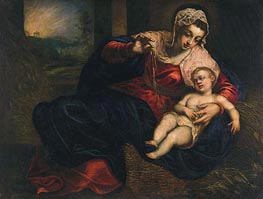
Madonna and Child c.1570/72
Oil Painting
$3550
$3550
Canvas Print
$70.96
$70.96
SKU: JTT-7898
Jacopo Robusti Tintoretto
Original Size: 99.4 x 129.5 cm
Fine Arts Museums of San Francisco, California, USA
Jacopo Robusti Tintoretto
Original Size: 99.4 x 129.5 cm
Fine Arts Museums of San Francisco, California, USA

Saint George c.1543/44
Oil Painting
$3662
$3662
Canvas Print
$62.05
$62.05
SKU: JTT-7899
Jacopo Robusti Tintoretto
Original Size: 122 x 92 cm
The State Hermitage Museum, St. Petersburg, Russia
Jacopo Robusti Tintoretto
Original Size: 122 x 92 cm
The State Hermitage Museum, St. Petersburg, Russia
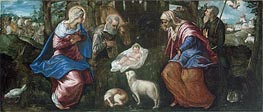
The Nativity a.1580
Oil Painting
$4672
$4672
SKU: JTT-7900
Jacopo Robusti Tintoretto
Original Size: 155.6 x 358.1 cm
Boston Museum of Fine Arts, Massachusetts, USA
Jacopo Robusti Tintoretto
Original Size: 155.6 x 358.1 cm
Boston Museum of Fine Arts, Massachusetts, USA
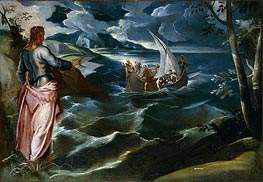
Christ at the Sea of Galilee c.1575/80
Oil Painting
$1393
$1393
Canvas Print
$64.46
$64.46
SKU: JTT-7901
Jacopo Robusti Tintoretto
Original Size: 117.1 x 169.2 cm
National Gallery of Art, Washington, USA
Jacopo Robusti Tintoretto
Original Size: 117.1 x 169.2 cm
National Gallery of Art, Washington, USA
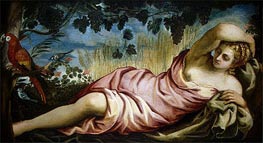
Summer c.1546/48
Oil Painting
$1704
$1704
Canvas Print
$62.05
$62.05
SKU: JTT-7902
Jacopo Robusti Tintoretto
Original Size: 105.7 x 193 cm
National Gallery of Art, Washington, USA
Jacopo Robusti Tintoretto
Original Size: 105.7 x 193 cm
National Gallery of Art, Washington, USA

Susanna c.1575
Oil Painting
$3304
$3304
Canvas Print
$63.60
$63.60
SKU: JTT-7903
Jacopo Robusti Tintoretto
Original Size: 150.2 x 102.6 cm
National Gallery of Art, Washington, USA
Jacopo Robusti Tintoretto
Original Size: 150.2 x 102.6 cm
National Gallery of Art, Washington, USA

A Procurator of Saint Mark's c.1575/85
Oil Painting
$1970
$1970
Canvas Print
$68.40
$68.40
SKU: JTT-7904
Jacopo Robusti Tintoretto
Original Size: 138.7 x 101.3 cm
National Gallery of Art, Washington, USA
Jacopo Robusti Tintoretto
Original Size: 138.7 x 101.3 cm
National Gallery of Art, Washington, USA
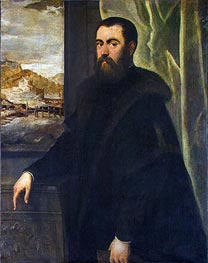
Portrait of a Venetian Senator c.1552/56
Oil Painting
$1918
$1918
Canvas Print
$73.01
$73.01
SKU: JTT-7905
Jacopo Robusti Tintoretto
Original Size: 110.5 x 88 cm
National Gallery of Art, Washington, USA
Jacopo Robusti Tintoretto
Original Size: 110.5 x 88 cm
National Gallery of Art, Washington, USA

Portrait of a Man as Saint George c.1540/50
Oil Painting
$3357
$3357
Canvas Print
$80.19
$80.19
SKU: JTT-7906
Jacopo Robusti Tintoretto
Original Size: 83.8 x 71.1 cm
National Gallery of Art, Washington, USA
Jacopo Robusti Tintoretto
Original Size: 83.8 x 71.1 cm
National Gallery of Art, Washington, USA

The Madonna of the Stars c.1575/85
Oil Painting
$3790
$3790
Canvas Print
$73.53
$73.53
SKU: JTT-7907
Jacopo Robusti Tintoretto
Original Size: 92.7 x 72.7 cm
National Gallery of Art, Washington, USA
Jacopo Robusti Tintoretto
Original Size: 92.7 x 72.7 cm
National Gallery of Art, Washington, USA

The Origin of the Milky Way a.1575
Oil Painting
$5983
$5983
Canvas Print
$83.44
$83.44
SKU: JTT-7908
Jacopo Robusti Tintoretto
Original Size: 149.4 x 168 cm
National Gallery, London, UK
Jacopo Robusti Tintoretto
Original Size: 149.4 x 168 cm
National Gallery, London, UK

Portrait of a Man c.1550/75
Oil Painting
$2559
$2559
Canvas Print
$62.05
$62.05
SKU: JTT-7909
Jacopo Robusti Tintoretto
Original Size: 63.5 x 57.5 cm
Rijksmuseum, Amsterdam, Netherlands
Jacopo Robusti Tintoretto
Original Size: 63.5 x 57.5 cm
Rijksmuseum, Amsterdam, Netherlands
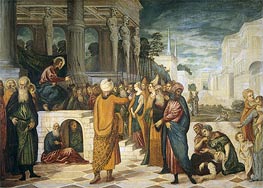
Christ and the Spellbound Woman c.1550/80
Canvas Print
$67.19
$67.19
SKU: JTT-7910
Jacopo Robusti Tintoretto
Original Size: 160 x 225 cm
Rijksmuseum, Amsterdam, Netherlands
Jacopo Robusti Tintoretto
Original Size: 160 x 225 cm
Rijksmuseum, Amsterdam, Netherlands
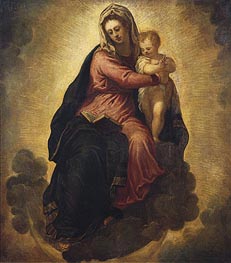
The Virgin and Child c.1540/45
Oil Painting
$3343
$3343
Canvas Print
$71.19
$71.19
SKU: JTT-7911
Jacopo Robusti Tintoretto
Original Size: 89 x 80 cm
The Royal Collection, London, UK
Jacopo Robusti Tintoretto
Original Size: 89 x 80 cm
The Royal Collection, London, UK
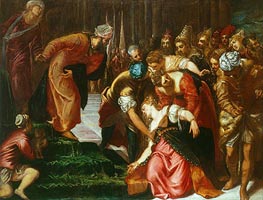
Esther before Ahasuerus c.1546/47
Canvas Print
$65.42
$65.42
SKU: JTT-7912
Jacopo Robusti Tintoretto
Original Size: 207.7 x 275.5 cm
The Royal Collection, London, UK
Jacopo Robusti Tintoretto
Original Size: 207.7 x 275.5 cm
The Royal Collection, London, UK

The Muses c.1578
Canvas Print
$62.05
$62.05
SKU: JTT-7913
Jacopo Robusti Tintoretto
Original Size: 206.7 x 309.8 cm
The Royal Collection, London, UK
Jacopo Robusti Tintoretto
Original Size: 206.7 x 309.8 cm
The Royal Collection, London, UK
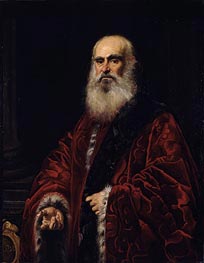
Portrait of a Venetian Patrician n.d.
Oil Painting
$3304
$3304
Canvas Print
$62.94
$62.94
SKU: JTT-7914
Jacopo Robusti Tintoretto
Original Size: 113.6 x 89 cm
Memorial Art Gallery at the University of Rochester, New York, USA
Jacopo Robusti Tintoretto
Original Size: 113.6 x 89 cm
Memorial Art Gallery at the University of Rochester, New York, USA
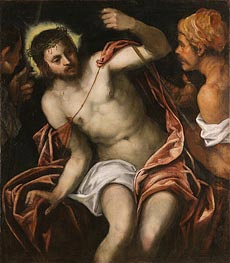
Christ Crowned with Thorns n.d.
Oil Painting
$4364
$4364
Canvas Print
$137.30
$137.30
SKU: JTT-7915
Jacopo Robusti Tintoretto
Original Size: 112.8 x 99.4 cm
Fogg Art Museum at Harvard University, Massachusetts, USA
Jacopo Robusti Tintoretto
Original Size: 112.8 x 99.4 cm
Fogg Art Museum at Harvard University, Massachusetts, USA
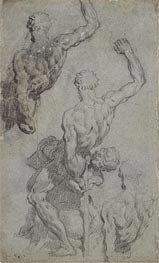
Samson and the Philistine n.d.
Paper Art Print
$58.76
$58.76
SKU: JTT-7916
Jacopo Robusti Tintoretto
Original Size: 45 x 27.2 cm
Fogg Art Museum at Harvard University, Massachusetts, USA
Jacopo Robusti Tintoretto
Original Size: 45 x 27.2 cm
Fogg Art Museum at Harvard University, Massachusetts, USA

Samson and the Philistine n.d.
Paper Art Print
$58.76
$58.76
SKU: JTT-7917
Jacopo Robusti Tintoretto
Original Size: 38.5 x 23.2 cm
Fogg Art Museum at Harvard University, Massachusetts, USA
Jacopo Robusti Tintoretto
Original Size: 38.5 x 23.2 cm
Fogg Art Museum at Harvard University, Massachusetts, USA

Portrait of Doge Pietro Loredan c.1567/70
Oil Painting
$3347
$3347
Canvas Print
$78.15
$78.15
SKU: JTT-7918
Jacopo Robusti Tintoretto
Original Size: 126 x 106.6 cm
Kimbell Art Museum, Fort Worth, USA
Jacopo Robusti Tintoretto
Original Size: 126 x 106.6 cm
Kimbell Art Museum, Fort Worth, USA
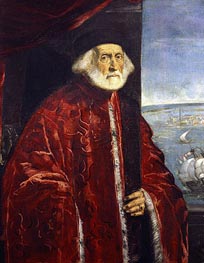
Portrait of a Venetian Procurator n.d.
Oil Painting
$3424
$3424
Canvas Print
$73.01
$73.01
SKU: JTT-7919
Jacopo Robusti Tintoretto
Original Size: 113.3 x 89 cm
Frick Collection, New York, USA
Jacopo Robusti Tintoretto
Original Size: 113.3 x 89 cm
Frick Collection, New York, USA
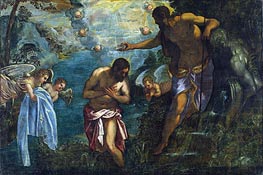
Baptism of Christ c.1585
Oil Painting
$3790
$3790
Canvas Print
$62.24
$62.24
SKU: JTT-7920
Jacopo Robusti Tintoretto
Original Size: 169 x 251.4 cm
Cleveland Museum of Art, Ohio, USA
Jacopo Robusti Tintoretto
Original Size: 169 x 251.4 cm
Cleveland Museum of Art, Ohio, USA